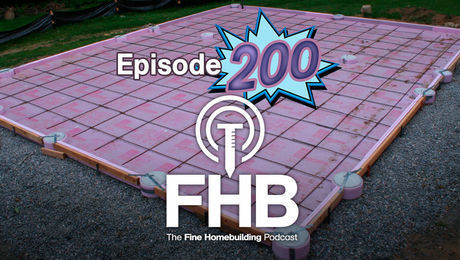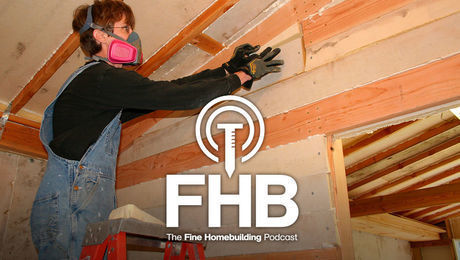Q:
I just read William B. Rose’s excellent article, Details for a Dry Foundation. But nothing in his article or in any other that I’ve read deals with the problem of water freezing and blocking openings where downspout, foundation or footing drains return to daylight in winter. Can this blockage be avoided to keep the system flowing?
William H. Tobin, South Holland, IL
A:
William B. Rose, a research architect at the Building Research Council at the University of Illinois, replies: The question of how to discharge rainwater away from a structure during freezing weather is an important and difficult point. In general, the construction industry does not have a good track record on this one. Recall the last pothole your front tire hit, and you begin to get the idea that we have a lot to learn.
The short answer is that there is no easy way to prevent water from freezing as it discharges from daylight openings in subfreezing weather. A simple fix would be to ensure that the water be discharged into a warm underground storm-sewer system, preferably via storm drains inside rather than outside the structure. That solution may work great for a factory, but it’s probably not practical for use in most homes.
In a typical house during freezing weather, the water course away from the house may be something like this. First, snow on the roof gets melted by sunlight or house heat, refreezes at the eaves, melts again and forms icicles, melts at the gutter, refreezes in the downspout because of leaf blockage and melts again where it is discharged into the warm ring of unfrozen soil around the house. It then drains to the footing drain, runs outward toward daylight (in Mr. Tobin’s example) and then freezes in layers as it moves toward colder surfaces at the daylight discharge opening. As you might imagine, with all these variables, this is not a setup for an easy fix.
What I suggest instead are preventative measures to minimize the amount of water that makes it to the openings. Here are a few guidelines. First, prevent ice dams (the snow melting and refreezing on your roof) by preventing excess heat loss through your attic. Attic ventilation can help a little but not a lot. Next, make a habit of cleaning all gutters and downspouts before winter comes.
Make sure that the slope of the soil away from the house is positive so that surface water drains away over the frozen ground. Another idea is to incorporate foundation insulation together with subterranean flashing as outlined in my article. Finally, keep any daylight discharge openings wide open and free of debris that might inhibit the flow of runoff, making it easier to freeze shut.
When we finally develop road technology that can prevent potholes, let’s adapt it to our building technology as well. Until then, prevention is the best medicine.

























